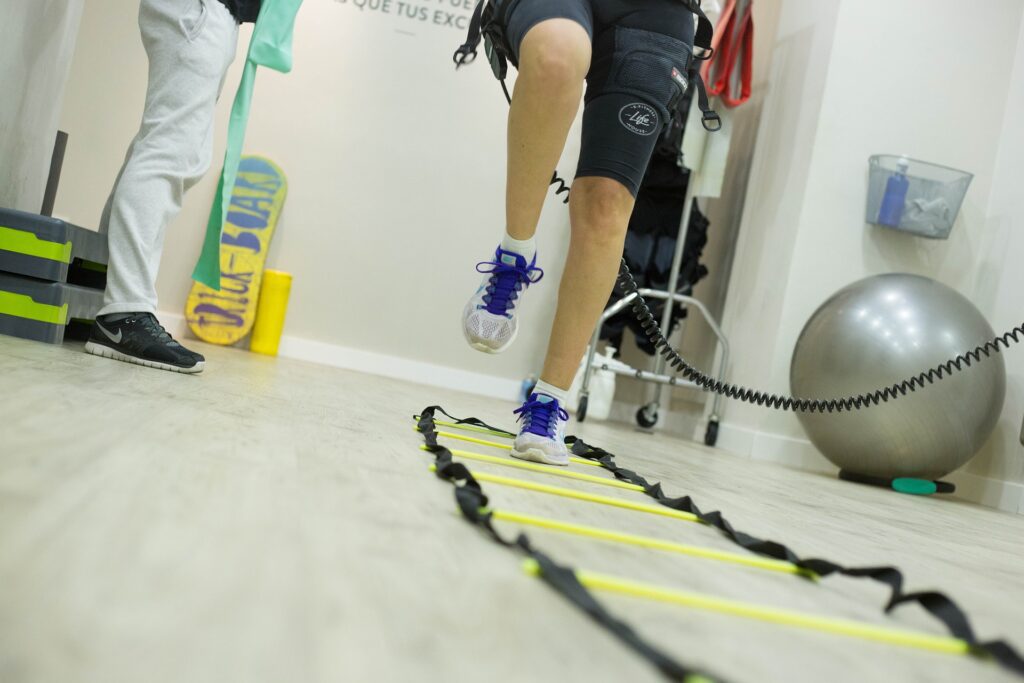If you ever had suffered from a sports injury or involved in a car mishap, you may have received physiotherapy. It is usually best for the patients with arthritis, amputations, strains (mainly in the spine), or who have had an operation. These treatments are usually tailored to the needs of the patient. This makes their everyday life simple and hassle-free. So, let’s check out everything about physiotherapy.
What is Physiotherapy Treatment?
Physiotherapy is the holistic process of maintaining and restoring well being, functioning, and mobility of the person. This helps them lower the risk of illness or injury in the upcoming years.
What Happens in Physiotherapy?
Your physio will begin with in-depth medical history to assess all the required details about your existing problem. After that, they perform a full assessment to identify what the issue is. They will then explain it in full detail to you and answer all the queries you have in your mind. All this will help you craft a perfect treatment plan for you.
Depending on where the issue is, your physiotherapist may ask you to remove clothing to observe some basic movements in sitting standing and lying. Physiotherapy sessions typically last between 45 minutes and one hour.
Session 1:
a) Subjective Assessment
In the first session, the physiotherapist evaluates the extent of the issue of a patient via close examination and taking into account medical history.
Your physio may ask you the following questions:
- How long have you had the illness?
- Have you already taking advice from another practitioner?
- How did it start, and was it caused by an accident or long-term strain?
- How does the condition affect your daily life?
- What do you usually do in your free time?
b) Objective Assessment
Objective assessment is the assessment of the injury physically. A physiotherapist may ask you to perform certain actions.
Session 2:
In the next session, your doctor may ask you:
- Do you spot any changes in your condition?
- How you have been here since the last appointment?
Note: Your physiotherapist will reassess your condition in every session. He or she guides you step-by-step about the next task. It means if you were given treatment at your first appointment, he or she would use this assessment to see if you have recovered well or not.
What Health Conditions Does Physiotherapy Treat?
Physiotherapy is good in treating a wide range of conditions like:
- Lung issues (like asthma)
- Neck and back pain due to issues in the skeleton and muscles
- Disability
- Mobility problems caused due to trauma to the brain or disorders (like multiple sclerosis and Parkinson)
- Pelvic issues (like bowel and bladder issues related to childbirth)
- Pain, swelling, fatigue, stiffness
- Loss of muscle strength
- Issues in the bones, muscles joints, and ligaments due to amputation and arthritis
What does Physiotherapist Do?
Physiotherapists are highly trained health experts backed with good knowledge, cutting-edge equipment, and special skills in assessing body parts of human and restoring it back to the normal for optimal performance. They diagnose and treat the most common movement disorders and ailments.
Certified Camden physiotherapy experts help people affected by disorders, disability, and injury via manual therapy, great advice, exercise, and education. This helps people of all ages to prevent disorder and cope with pain quickly. Their primary aim is to boost well-being and quality of life of the person by using numerous treatments.
What to Expect?
Expect therapists to ask in-depth questions about your injury
You won’t get discharged till you feel well and confident that you have recovered
Your therapist may also ask you to move your limbs to check flexibility. It may cause a little bit of discomfort, but make sure you stay patient and tell the doctor about what you feel. This will help you to find the real causes of symptoms.
Common Physiotherapy Techniques
After the assessment, clinicians will pick the best physiotherapy techniques for you. This includes:
1. Joint Mobilization
Joint mobilization is a slow manual technique performed by the therapist to get rid of muscle spasms, pain, and muscle spasms. This will also enhance flexibility in the joints, ligaments, muscles, and tendons.
2. Rehabilitation Exercises
Rehabilitation exercises are proven to be the most effective ways to prevent injury and pain. He or she may blend exercises, yoga, and pilates to offer good outcome. This allows patients to tackle any issue with much ease. It also makes the healing process faster.
3. Dry Needling and Acupuncture
Acupuncture is a medical practice that focuses on stimulating certain points on the body by penetrating the needle into the skin. On the other hand, dry needling is the method used by therapists by inserting the needle into the skin to curb pain.
The big difference between the two is that dry needling advice point locations and dosage for treatment of particular conditions. However, acupuncture change ‘Chi’ flow. Many clinicians also do training in dry needling and acupuncture to boost muscle functioning and get rid of the pain.
Tips for Physiotherapy Treatment
If you have had a bad experience in the past, it can be tough for you to move ahead. So, let’s check out the best tips for success.
Listen to the advice of your therapist carefully and follow it
Be regular in your treatment
Always listen to your body and avoid hurting your body too much
Find Top Physiotherapist Near You
If you are facing chronic pain or injury that deters you from your daily tasks, it’s a smart idea to recruit a skilled physiotherapist.
Type ‘best physiotherapy clinic near me’ on Google and hit the search button to get the list of top ten physical therapy providers in your area.
Wrapping Up
Physiotherapy requires patients to do complete homework. Your physio will recommend a perfect home program for you, depending on your health condition. It is vital for enhancing symptoms, speed up recovery, and accomplish the desired outcome faster.
